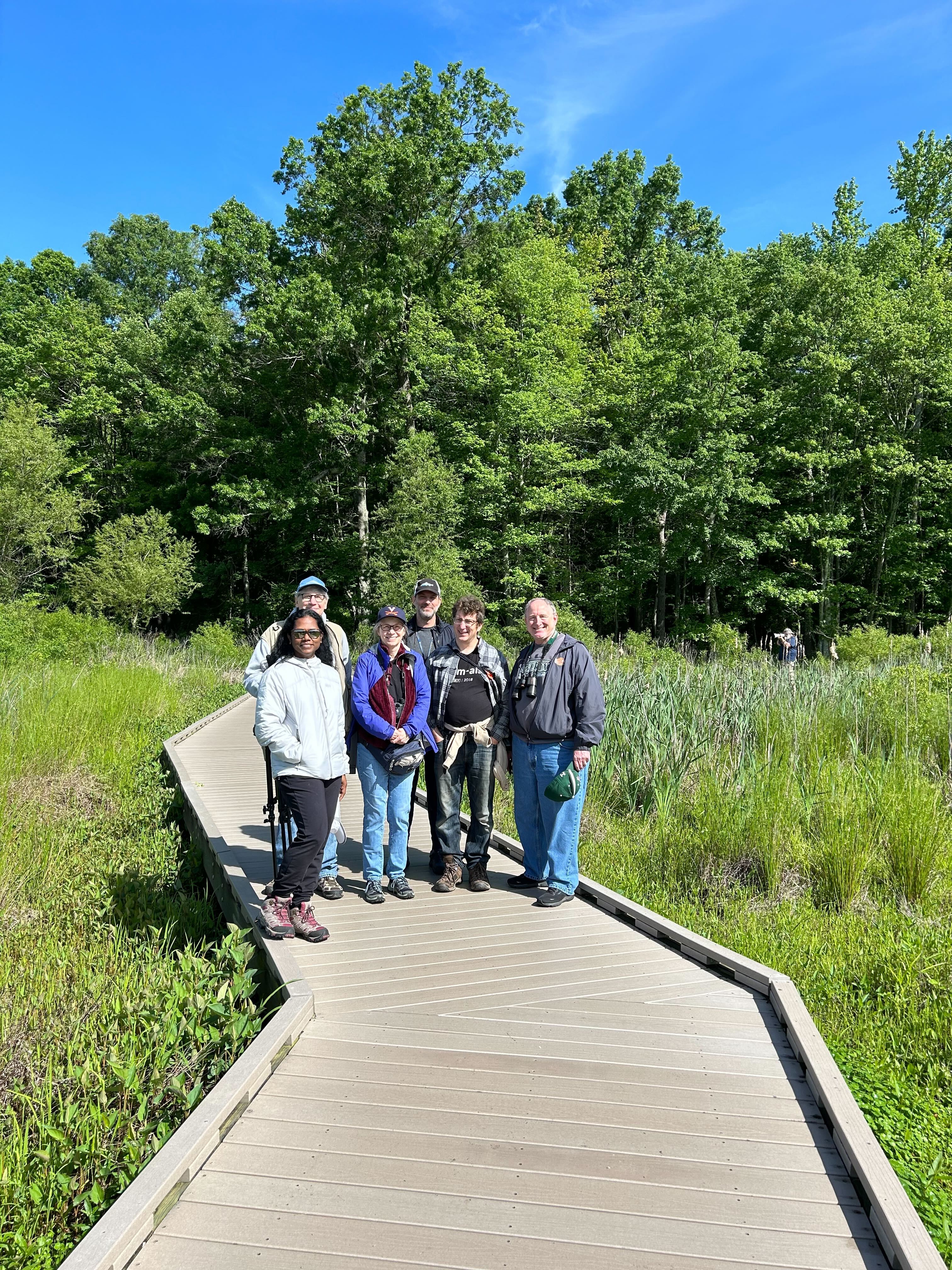I assisted at Elklick Woodlands Natural Area Preserve for a couple of work days. (More days to come? subject to scheduling.) Park Authority staff are actively managing woody vegetation within several deer exclosures in order to re-establish and extend a rare forest community, known as northern hardpan basic oak-hickory forest. Thousands of trees were planted about five years ago, and those that have survived are about knee height now.
 The management is fairly aggressive: both native and non-native trees, all of them faster growing than the oaks and hickories, are cut back to the ground, for instance these Virginia Pines (Pinus virginiana) which would soon shade out the white oak at the right of the photo.
The management is fairly aggressive: both native and non-native trees, all of them faster growing than the oaks and hickories, are cut back to the ground, for instance these Virginia Pines (Pinus virginiana) which would soon shade out the white oak at the right of the photo.
 Many of the trees that we’re nurturing are still very small, and have dropped all their leaves at this time of the year. So flags make it a lot easier to find them.
Many of the trees that we’re nurturing are still very small, and have dropped all their leaves at this time of the year. So flags make it a lot easier to find them.
I’m also back at The Nature Conservancy’s Fraser Preserve, now equipped with a new tool: an Extractigator Junior, generically known as a weed wrench. For non-native invasive shrubs like Rosa multiflora and Berberis thunbergii, we need to remove as much of the root as possible. A garden fork and some steady pulling will accomplish this, but a weed wrench gives you some mechanical advantage and is easier on the muscles. The genius of these gizmos is that no springs are involved, so it’s unlikely that you’re going to mash a digit.
A composite of a couple of roses that I pulled: Dropping the tool into position.
Closing the jaws around the stems and beginning to pull back on the handle.
The extracted crown of the plant.
I’m still finding my touch with the tool. With smaller plants, I have a tendency to snap off the stem rather than pull it out with the roots. The Junior weighs just under ten pounds, so it’s luggable from Fraser’s parking area to our work sites.











